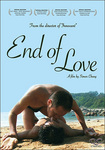Wednesday 30 June 2010
Storm
Posted by barryg at 15:39 0 comments
Sunday 27 June 2010
Bad lieutenant 2
 When Nicholas Cage has a good script and director, he's able to be so outrageously over the top that he seems scarily normal. As the blackly comic title character in the reincarnation of Bad Lieutenant, Cage totters and rages and snorts under Werner Herzog's direction. Subtitled Port of Call: New Orleans, this is a detective thriller, police procedural and a black comedy that marks a high way-OTT point for both actor and director.
When Nicholas Cage has a good script and director, he's able to be so outrageously over the top that he seems scarily normal. As the blackly comic title character in the reincarnation of Bad Lieutenant, Cage totters and rages and snorts under Werner Herzog's direction. Subtitled Port of Call: New Orleans, this is a detective thriller, police procedural and a black comedy that marks a high way-OTT point for both actor and director.
Mao's last dancer
Posted by barryg at 14:44 0 comments
Labels: B, docdr, personalities
Wednesday 23 June 2010
End of love
 One of Hong Kong's better gay movies, screened at the city's annual film festival in 2009 with a III Rating, was shown at the Berlin festival but didn't gain a public release in its home city. End of Love seemed to deserve it, judging by the positive review in the Hollywood Reporter. There's none of the usual Asian angst about being gay, its review noted happily.
One of Hong Kong's better gay movies, screened at the city's annual film festival in 2009 with a III Rating, was shown at the Berlin festival but didn't gain a public release in its home city. End of Love seemed to deserve it, judging by the positive review in the Hollywood Reporter. There's none of the usual Asian angst about being gay, its review noted happily.
Tuesday 22 June 2010
Broken embraces
 Audiences are not supposed to take Pedro Almodovar's films seriously. They are supposed to giggle, guffaw and groan. The prolific Spanish director is an entertainer, a master of soap operatics.
Audiences are not supposed to take Pedro Almodovar's films seriously. They are supposed to giggle, guffaw and groan. The prolific Spanish director is an entertainer, a master of soap operatics.
Monday 21 June 2010
Cove
 The Cove is subtitled The Bay of Shame and it's put the Japanese fishing community of Taiji on the map of eco horror sites. In one small cove, every year in the fall, more than 20,000 dolphins are slaughtered. They are said to be the ones that no dolphinarium wants to buy and train.
The Cove is subtitled The Bay of Shame and it's put the Japanese fishing community of Taiji on the map of eco horror sites. In one small cove, every year in the fall, more than 20,000 dolphins are slaughtered. They are said to be the ones that no dolphinarium wants to buy and train.
Posted by barryg at 22:50 0 comments
Last station
 By accident, I watched a movie's deleted scenes before I'd seen the feature. I'll try not to do it again, even though The Missed Station showed me that its stars had a lot of four-lettered fun missing cues and mugging on the early-20th-Century Russian sets of The Last Station. On several occasions, they'd clearly found their dialogue not just funny but daft. Me too.
By accident, I watched a movie's deleted scenes before I'd seen the feature. I'll try not to do it again, even though The Missed Station showed me that its stars had a lot of four-lettered fun missing cues and mugging on the early-20th-Century Russian sets of The Last Station. On several occasions, they'd clearly found their dialogue not just funny but daft. Me too.
Posted by barryg at 16:07 0 comments
Sunday 20 June 2010
Green zone
 They're back! Director Paul Greengrass and action star Matt Damon. A junior US army officer is the maverick truth-seeker in a world where his government lies. Is this the fourth installment of the Bourne franchise? No, it's Green Zone, the filmed version of the Washington Post's Baghdad correspondent's book about the USA's "Imperial" follies during its invasion and early occupation of Iraq in 2003.
They're back! Director Paul Greengrass and action star Matt Damon. A junior US army officer is the maverick truth-seeker in a world where his government lies. Is this the fourth installment of the Bourne franchise? No, it's Green Zone, the filmed version of the Washington Post's Baghdad correspondent's book about the USA's "Imperial" follies during its invasion and early occupation of Iraq in 2003.
Posted by barryg at 14:51 0 comments
Friday 18 June 2010
I love you Phillip Morris
 It is so not surprising that the USA release of I Love You Phillip Morris has been delayed yet again, to December 2010, perhaps. There were initial doubts, more than a year ago, that it would ever get distributed in the USA. Meanwhile, it has appeared around the rest of the world, won some awards and a lot of recognition for the acting of its two leads, Jim Carrey and Ewan McGregor. So what's the hold-up, you might ask?
It is so not surprising that the USA release of I Love You Phillip Morris has been delayed yet again, to December 2010, perhaps. There were initial doubts, more than a year ago, that it would ever get distributed in the USA. Meanwhile, it has appeared around the rest of the world, won some awards and a lot of recognition for the acting of its two leads, Jim Carrey and Ewan McGregor. So what's the hold-up, you might ask?
Wednesday 16 June 2010
Nowhere boy
 Former child-actor Aaron Johnson had a tough task in Sam Taylor-Wood's Nowhere Boy. He had to look, sound and emote the way a global audience would expect John Lennon to have done as a teenager. Yet the biopic had to be faithful to the realities of Lennon's early years, which were those of a self-defensively sardonic lower-middle-class Liverpool boy with a troubled absent mother (Anne-Marie Duff) and over-loving guardian, his Aunt Mimi (Kristin Scott Thomas).
Former child-actor Aaron Johnson had a tough task in Sam Taylor-Wood's Nowhere Boy. He had to look, sound and emote the way a global audience would expect John Lennon to have done as a teenager. Yet the biopic had to be faithful to the realities of Lennon's early years, which were those of a self-defensively sardonic lower-middle-class Liverpool boy with a troubled absent mother (Anne-Marie Duff) and over-loving guardian, his Aunt Mimi (Kristin Scott Thomas).
Posted by barryg at 21:33 0 comments
Valhalla rising

Valhalla Rising was the title of an action adventure in Clive Cussler's series of Dirk Pitt novels. Although the title of the book and author's name feature in the movie version's opening credit, I've only traced one connection : the novel referred to signs of Vikings having visited the Hudson River.
Posted by barryg at 17:51 0 comments
Balibo
 Every country has local stories that become major myths, fables in which there are no surviving witnesses to separate fact and fiction. In Balibo, an East Timorese village near the Indonesian border, five Australian journalists went missing, presumed killed, in 1975 during the invasion of the former Portuguese colony by Jakarta's military forces.
Every country has local stories that become major myths, fables in which there are no surviving witnesses to separate fact and fiction. In Balibo, an East Timorese village near the Indonesian border, five Australian journalists went missing, presumed killed, in 1975 during the invasion of the former Portuguese colony by Jakarta's military forces.
Tuesday 15 June 2010
Agora
 The sheer old-fashioned opulence of the sets, costumes and special effects for Agora prompts an obvious question.
The sheer old-fashioned opulence of the sets, costumes and special effects for Agora prompts an obvious question.
Posted by barryg at 23:17 0 comments
Monday 14 June 2010
Shutter Island
 Leonardo DiCaprio and Martin Scorsese work well together, and Shutter Island is another of their good workmanlike movies. It's apparent that Scorsese honed many tricks of the horror genre while making Cape Fear. Audiences for such scary entertainments get what they'd expect, from insistently melodramatic soundtracks to villains with bulging eyes, from very fishy red herrings to raging sound-effected storms and expertly lit spooky cinematography.
Leonardo DiCaprio and Martin Scorsese work well together, and Shutter Island is another of their good workmanlike movies. It's apparent that Scorsese honed many tricks of the horror genre while making Cape Fear. Audiences for such scary entertainments get what they'd expect, from insistently melodramatic soundtracks to villains with bulging eyes, from very fishy red herrings to raging sound-effected storms and expertly lit spooky cinematography.
Posted by barryg at 21:10 0 comments
Daybreakers
 There seems to be a fad for pairs of brothers to co-create movies. The Weinsteins just produce them, while the Coens, Hugheses and the unpronounceables from the Matrix series share directorial honours too. Australia's Spierig brothers have joined the international band of cinematic brothers with their third feature film, Daybreakers. It's a good effort to assuage the critics of their two Undead bloodfests.
There seems to be a fad for pairs of brothers to co-create movies. The Weinsteins just produce them, while the Coens, Hugheses and the unpronounceables from the Matrix series share directorial honours too. Australia's Spierig brothers have joined the international band of cinematic brothers with their third feature film, Daybreakers. It's a good effort to assuage the critics of their two Undead bloodfests.
Posted by barryg at 09:23 0 comments



